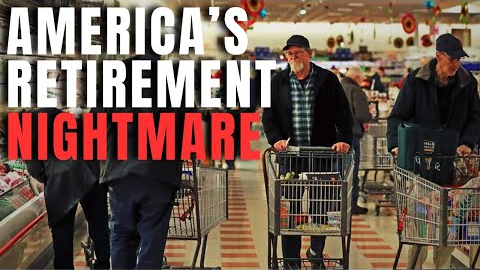Retirement Nightmare: Half Of All Seniors Will Face Homelessness at Alarming Rates
3,302 View
Share this Video
- Publish Date:
- October 23, 2023
- Category:
- Real Estate Trends
- Video License
- Standard License
- Imported From:
- Youtube
Tags

#economy #business
Approximately 57 million Americans are employed by companies that do not provide retirement savings plans. A growing number of elderly citizens are now grappling with homelessness, a problem more widespread than ever before. The retirement crisis and escalating rents have left millions of seniors financially strained. Increasingly, more baby boomers are awakening to the harsh reality that working throughout their adult lives doesn't guarantee them affordable housing in their later years. This demographic has endured a series of economic downturns over their lifetime, along with the soaring housing prices of the past five decades. Conversely, their incomes have not seen similar growth, preventing many from saving sufficiently for a comfortable retirement.
A recent report by The Wall Street Journal, based on data from the Department of Housing and Urban Development, highlights the startling fact that, in 2023, older adults constitute the fastest-growing segment of the country's homeless population. This surge in elderly homelessness is reminiscent of the Great Depression, a development emphasized by Dennis Cain, a social policy professor at the University of Pennsylvania.
Experts have dubbed this unsettling trend a "silver tsunami," indicating that this crisis has been building over the years. Dr. Margo Kushel, a professor of medicine and director of the Center for Vulnerable Populations and Benioff Homelessness and Housing Initiative at the University of California, San Francisco, has observed a mounting rate of homelessness among older Americans since the early 2000s. In the early 1990s, only 11% of homeless single adults were aged 50 or older, but by the early 2000s, this percentage had surged to 37.7%. Today, the over-50 demographic constitutes half of the homeless single adults in the U.S., signifying the vulnerability of baby boomers aged 57 to 75.
This is an entirely distinct population, according to Kushel, consisting of individuals who dedicated their lives to work, often in physically demanding jobs, yet never managed to save sufficiently. Government data indicates that over the past year, homelessness has surged by 11% nationwide, far surpassing the previous yearly record of 2.7% in 2019. The cessation of relief programs has exacerbated the situation, as these relief funds had provided a buffer, as noted by Donald Whitehead Jr., the executive director of the National Coalition for the Homeless.
Barbara Dieter, the group's senior director of policy, expressed concerns about the rising number of older individuals in shelters, encampments, or living in their vehicles, a scenario rarely observed before within the contemporary homeless crisis. Historically, there have been very few homeless individuals over 60. However, conditions have dramatically changed in the last decade, with the percentage of people aged 50 and older in homeless shelters increasing from 16% in 2013 to 23% in 2023. Furthermore, the National Health Care for the Homeless Council reported an increase in the percentage of baby boomer patients they served in 2022, rising from 25% 15 years earlier to 36%.
Did you miss our previous article...
https://trendinginrealestate.com/real-estate-trends/top-3-florida-counties-facing-deep-price-correction














